This event is insane. I've never seen so many innocent-looking Japanese people, patiently waiting to buy chocolates one minute and stepping on your foot without a backwards glance the next. Japan's chocolate culture is on the rise nowadays.
The chocolate festivals in central Japan draw thousands of tourists each winter, quickly becoming one of the most interesting things to do in Osaka and Tokyo. And you thought the French were serious about their truffles.
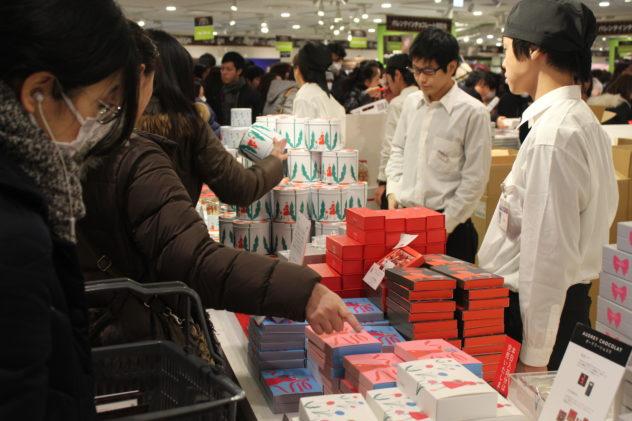
What to Expect
This is both a craft chocolate lover's dream, and their worst nightmare. On the one hand, local chocolate lovers have gathered together to import a huge variety of chocolate from makers around the world. Some of it is craft chocolate and other stuff is more commercial and mass-produced. I found bars made in Madagascar, Indonesia, Peru, the US, and so many more.
The chocolate selection there is truly astounding, and if you came to the Salon to pick up new bars, you came to the right place.
On the other hand, everything is stupendously expensive, even the bars made in Japan. The least expensive craft chocolate bars we had were still ~$4USD for 50g, and were actually produced in Ecuador by a Japanese company. Part of the price increase (in some cases more than 400% from buying them in their country of origin) is from import taxes in Japan and paying for samples, but the rest is shipping and staffing the booths. It's not cheap to be at these festivals, showcasing your wares and hoping that you can sell everything you brought. The Japanese chocolate makers weren't much better, however, with most bars weighing in at 40g for around $12USD apiece. Yet even then, the best chocolate in Japan is affordable for basically anyone, something you can't say about wine or even coffee.
Most visitors aren't there for the fine chocolate bars, though. They're there for Valentine's Day. Despite being a made-up holiday, Valentine's Day in Japan means massive chocolate sales as women scrambles to buy a nice present for their significant others (and themselves). Just a month later is White Day, basically the same thing but in reverse. These strange holidays lead to spikes in chocolate sales which rival the US and Europe, as Japanese people go crazy for beautiful boxes of bonbons. Despite this, the crowds at the Salon du Chocolat Osaka are still nothing compared to the masses visiting those same shops across Japan in the week before the holiday.
The party doesn't begin and end with foreign & Japanese chocolate makers, either. There are also dozens of chocolatiers and educational booths & photo ops, with vendors selling ice cream, fruit-based chocolates, and confections galore. Picture chocolate-flavored everything. In one room there are kids activities and child-centric chocolate gifts, while another is dedicated to alcohol-flavored chocolates. Like shots of sake, but chocolate-coated. Just don't let it slip your mind that they're some of the most expensive chocolates you've ever laid eyes on, though so totally worth it. Compared to Seoul's Salon du Chocolat, this was like eating wild-caught salmon instead of a frozen fish fillet from the grocery store.
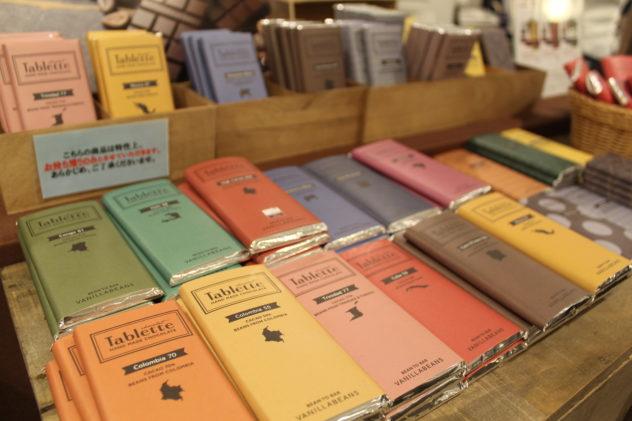
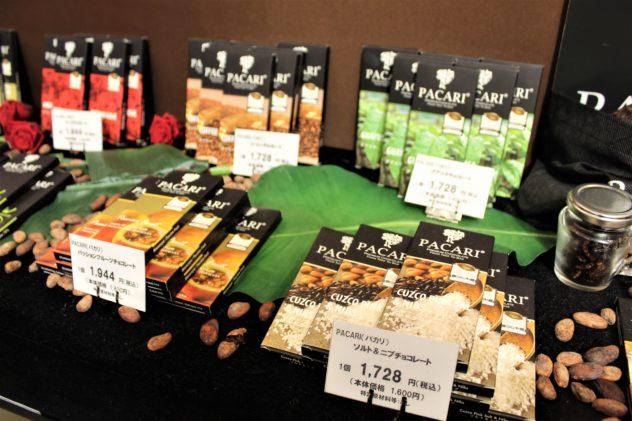
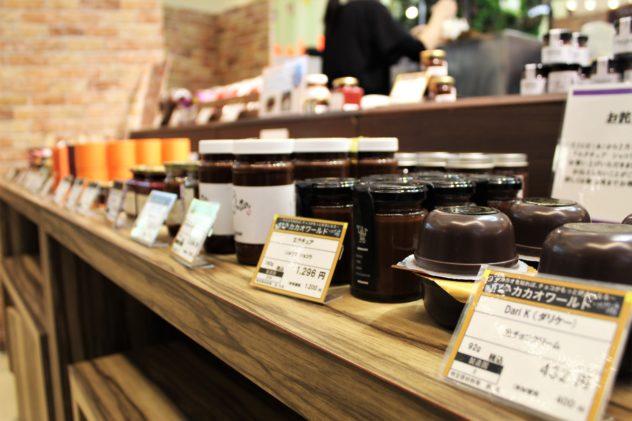
Who to Expect
Japanese Chocolate Makers & Chocolatiers
In terms of sheer numbers, the chocolatiers from Europe and Japan have the chocolate makers beat. Even though Japan is by far the leader in the Asian craft chocolate movement, evidenced by this very Salon du Chocolat, much of the founding membership of the movement was converted from chocolate imports. Fancy European chocolates and European-trained chocolatiers brought high-quality chocolates to the Japanese public starting about two decades ago, and people quickly caught on.
Chocolatier-turned-maker Koji Tsuchiya of Musee du Chocolat Theobroma fame was partially responsible for priming the public for the impending craft chocolate movement, and his confections made an appearance on the sales floor. Alongside Theobroma's confections were around three dozen other chocolatiers from throughout Japan, including Palet D'or, Royal L'Eclat, and Es Koyama. Even Bvlgari was selling a line of chocolates, apparently to nobody's surprise. For Japanese people, the best chocolate in Japan seems to be the one you can gift to your loved ones in the fanciest box.
Japanese chocolate makers and chocolatiers understand this, and so even the less impressive specimens we purchased had been beautifully wrapped and clearly labeled. Most of the people selling chocolates either spoke a decent amount of English or understood our yes/no questions (when asked clearly and slowly in plain English). Nothing we bought was less than appealing in appearance, though taste is another matter. Lucky for all of us, samples galore are offered to perspective buyers, hopefully having also raised the prices— I was stunned at the minimum bar price. Most bars were either 20g or 50g, and sold for around ¥600 or ¥1600, respectively.
Much of this came from the several craft chocolate makers from Tokyo, Osaka, Kyoto, and even from Fukuoka who were showing off their bars to potential customers. Minimal, Vanilla Beans, Green Bean to Bar, Dari K, and Ichiji are just a few of the better-known Japanese craft chocolate makers on the scene that week. The Japanese chocolate market is not a place known for its cheap quality or its cheap prices. And even the bars from the Americas, often more affordable, saw their prices inflate in relation to the distance they traveled.
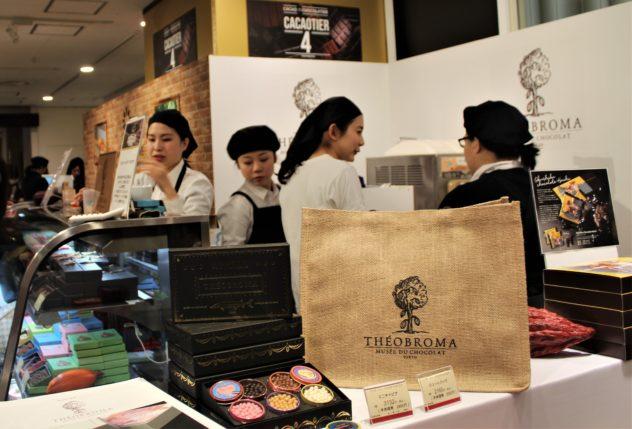
All Craft Chocolate Makers
Many European and American chocolate makers had bars for sale, from Raaka and Manoa to Willie's and Akesson's, with some of the makers showing up in person to man their booths. Others were imported by craft chocolate distributors selling in Japan, meaning that the variety ranged from value-added Madagascan chocolate to Peruvian chocolate made in Sweden. As a warning, the award-winning bars being sold at the festival were provided with their own display at the entrance to the festival, and Meiji's cheap "bean-to-bar" milk chocolates were also featured therein; I'm not sure how much trust to put in it.
It's the makers themselves whom I trust, and when they show up in person I'm that much more inclined to like their chocolate. When we met at the Salon du Chocolat in Osaka, Willie from Willie's Chocolate, who's been in the chocolate making business for two decades, remarked that he's able to keep prices so low by staying in charge of production himself and buying whole containers of cacao direct from farmers.
This is why, upon meeting them just a few booths away, Cacaoken chocolate out of Fukuoka stood out to me. The company makes their milk chocolate by blending their 80% dark chocolate with their white chocolate. They buy entire lots of cacao from Vietnam to control the fermentation themselves. The most interesting product of theirs that I got to try are these packets of two bars (20g each, ¥1400 a packet) which were made with beans from the same Vietnamese farm, but the beans were fermented for different lengths of time.
In terms of foreign chocolate makers on the general Japanese market, Cacao Hunters and Cacao Sampaka also both have strong ties to Japan and a strong presence in the country. Marou Chocolates out of Vietnam and Pipitlin out of Indonesia were some of the showstoppers in the Asian chocolate world, notable for producing bars in the same country as their ingredients were produced. I expect and look forward to many more value-added chocolate makers popping up in cacao growing countries over the next decade.
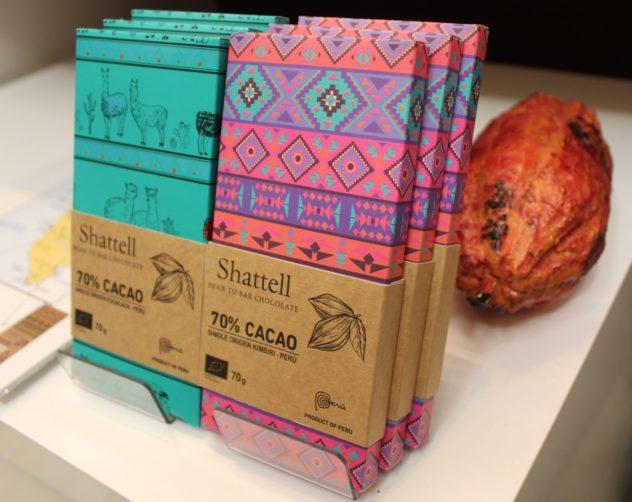
Practical Information
Dates: January 28th-February 14th, 2018 | 10am-8pm Sunday to Thursday & 10am-9pm Friday/Saturday
Cost: free to enter
Location: Hankyu Department Store at Umeda Subway Station (If you arrive via the JR, then follow the signs for the Midosuji line, and from thee follow lines for "Hanky Dept Store;" considering how confused I got in my attempts to find this festival and the correct department store, I recommend you ask at the Subway exit which way Hankyu is. See a station map here.)
About Hankyu Umeda: This department store has 13 floors, and a rooftop area. It's too cold to hang out on the roof during the winter, but the top three floors feature a bevy of restaurants and cafes. On the 9th floor is also an ice cream shop and a few cafes, as well as a stage area with seating. Otherwise the place is mobbed, packed with Japanese people and a smattering of tourists looking for nice Valentine's Day presents before the big holiday.
Save this for later!
Have you ever visited a chocolate festival in Japan or elsewhere? Would you like to visit this one?













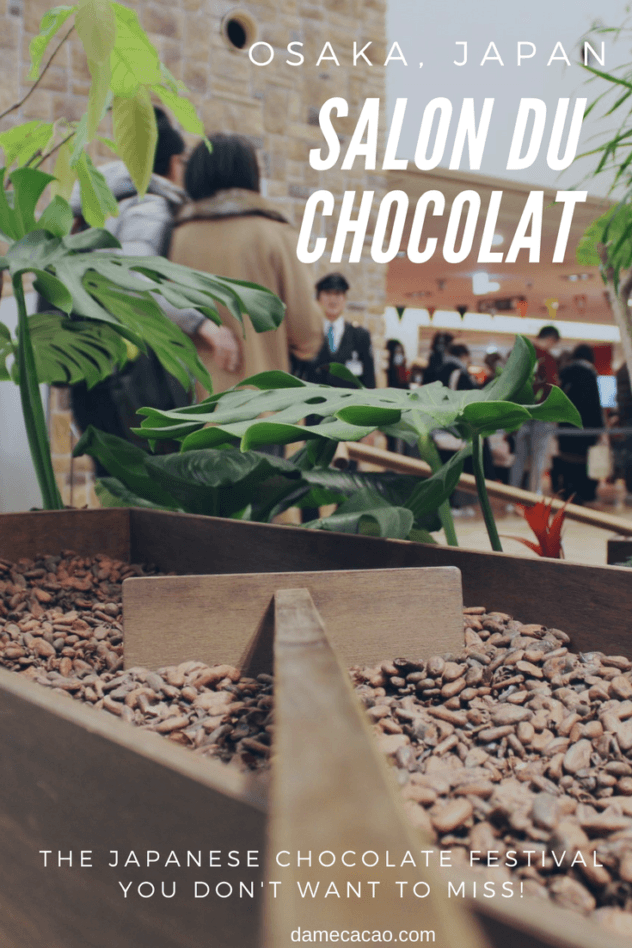


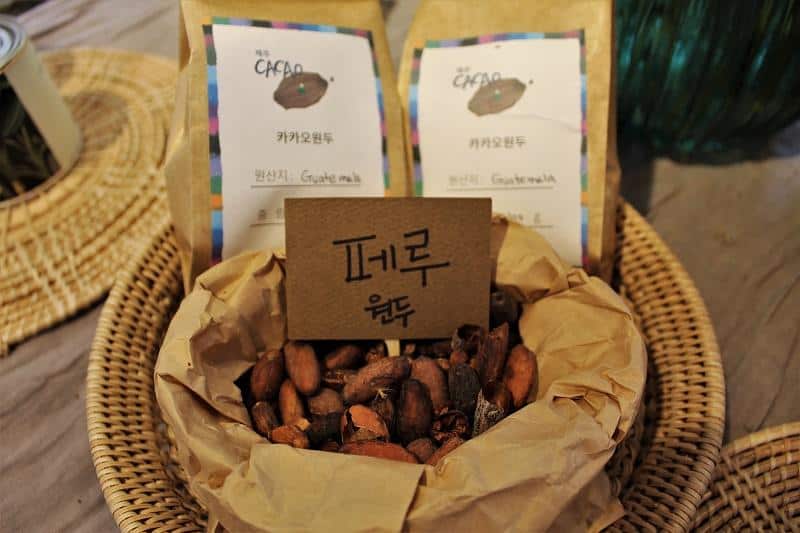
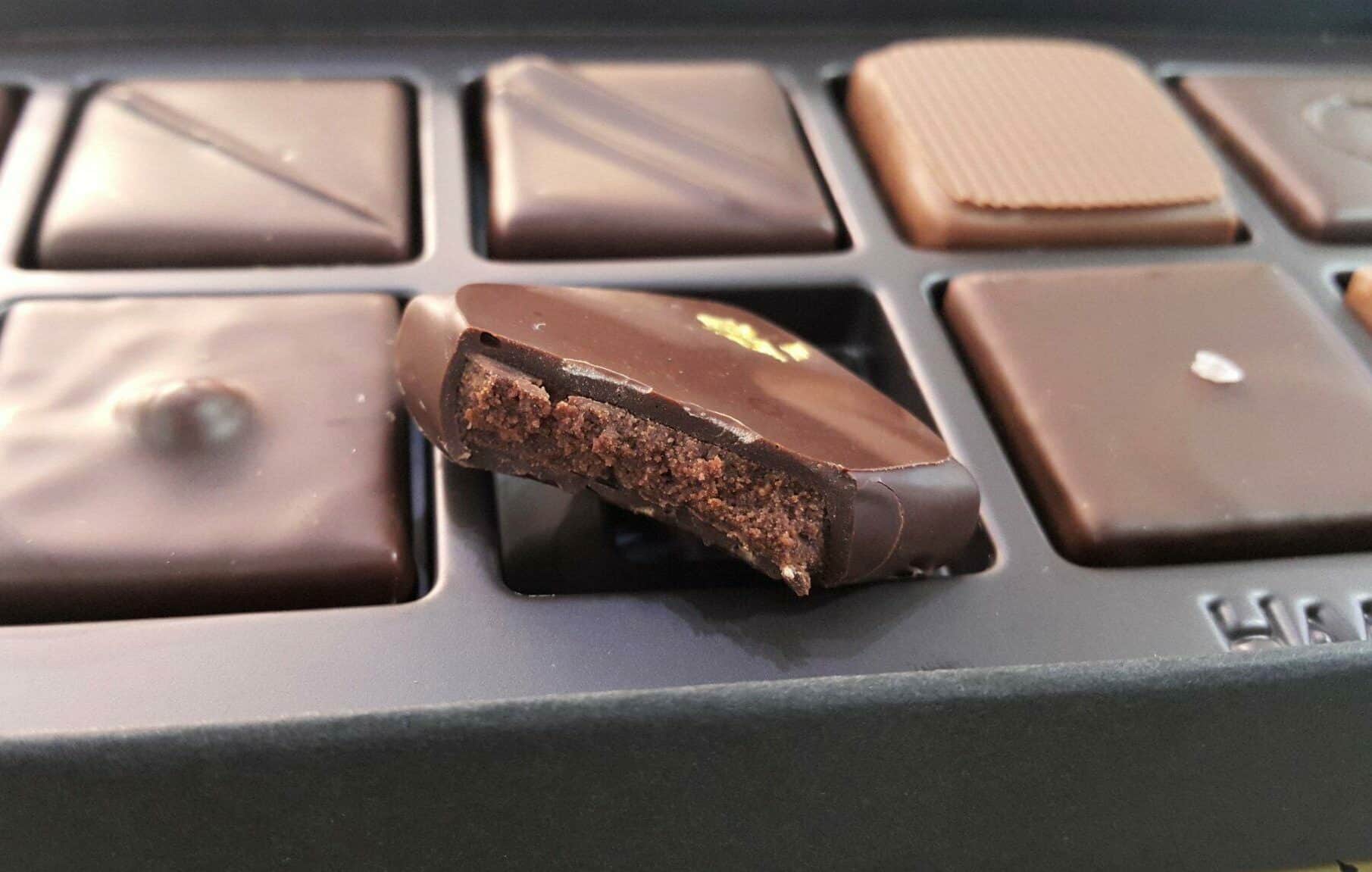
Tong
Hi,great to see your share. We are chocolate lovers in China. The event used to hold twice in shanghai then it ceased...
We'd like to join on 2019's event, but the official website hasn't show the date and place yet.
Maybe we can meet!
Max
Aw, that's too bad that the Salon in Shanghai stopped happening! I'm sure there will be another large festival coming there soon, though, as I know that many chocolate lovers in Hong Kong and Taiwan are interested in selling in China. I won't be at the Osaka Salon next year, but I will be at the Craft Chocolate Market in Tokyo-- if you're there, I'd love to say hi!
inlocamotion
I clearly have a lot to learn about the global craft chocolate industry! Thanks for providing all of this information, and very interesting point about the importance of presentation for gift giving in Japanese chocolate sales. Nice post - made me hungry for chocolate! 🙂
Max
You're very welcome for all the information (& chocolate cravings)!
Powell Lin
Hi Guys,
My name is Powell, I am representing Sinoexpo Informa Markets, the exclusive organiser for Salon Du Chocolat Shanghai! We have brought Salon Du Chocolat back in China and has recently completed our kick off from November 8-10, 2023!
We are currently planning next year’s Salon in China. If you would like to understand more, feel free to reach out at powell.lin@informa.com
Laureen
Omg. I need to visit this! And by the way your photos are lovely too.
Max
Thanks, Laureen! It's been fun playing around with my new camera, but even more fun is tasting the chocolate! Definitely make time for it on your next trip to Japan. 🙂